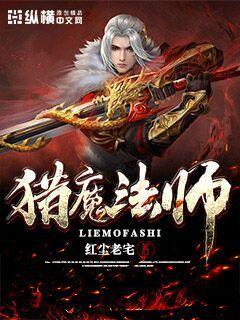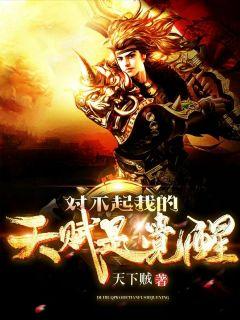
### 文章摘要
秘鲁足球明星以其实力和职业生涯的精彩表现,成为世界足坛的亮点。本文将从四个关键方面深入探讨这些球员:首先是他们的早期生涯和成长背景,其次是国内联赛和国际舞台上的表现,接着是他们在欧洲豪门俱乐部的经历,最后是对秘鲁国家队的贡献和荣誉。通过这些方面的分析,揭示出秘鲁球员在足球界的独特价值和影响力。
---
1、早期生涯与成长
秘鲁足球明星的职业生涯往往从年少时期开始展露才华。在家庭和社区的支持下,他们参加本地的足球联赛,通过表现吸引了青年队和业余球队的注意。这个阶段的训练和比赛锻炼了他们的基本技能和比赛经验,为未来的职业生涯奠定了坚实的基础。
随着天赋的逐步展现,一些球员被秘鲁顶级俱乐部的球探发掘,并获得了加入青年队的机会。这个转折点标志着他们足球生涯的正式开始,开始接触更高水平的训练和比赛。
在这个阶段,一些球员的天赋和努力使他们在本国联赛中崭露头角,成为球队的核心成员。他们通过稳定的表现和进步,吸引了国外俱乐部的注意,并开始迈向国际化的职业生涯。
2、国内联赛与国际舞台
在秘鲁国内联赛中,实力派球员展现出了卓越的技术和领导力。他们不仅在攻防两端展示出色表现,还通过进球和助攻为球队赢得胜利,成为球迷心中的偶像。这些球员常常被视为本土足球的旗帜,激励着更多年轻球员追求自己的梦想。
在国际舞台上,秘鲁球星们也展现了强大的竞争力。他们参加南美解放者杯等重要赛事,与来自其他南美国家的顶尖球队竞争,展现出了积极进取的精神和出色的比赛技巧。这些经历不仅丰富了他们的职业生涯,还提升了他们在国际足坛的声誉。
通过在国内联赛和国际舞台上的双重表现,秘鲁球星们赢得了球迷和专家的广泛认可,为自己的职业生涯打下了坚实基础。
3、欧洲豪门俱乐部经历
一些秘鲁足球明星选择挑战欧洲豪门俱乐部,这对他们的职业生涯意义重大。进入欧洲顶级联赛,他们面对更激烈的竞争和更高水平的比赛,这不仅考验了他们的技术和体能,也是个人成长的重要机会。
在欧洲豪门俱乐部,秘鲁球星们往往扮演重要角色,他们的技术和战术意识得到了进一步的提升。通过与世界级球员的训练和比赛,他们不断完善自己的技能,提升了在国际足坛的竞争力。
在这些俱乐部的经历不仅使他们个人成长,还为秘鲁足球的全球化发展作出了贡献。他们成为桥梁,将秘鲁足球文化和欧洲足球传统相结合,为俱乐部和国家队赢得了荣誉。
4、对秘鲁国家队的贡献与荣誉
秘鲁足球明星在国家队的贡献是他们职业生涯中的一大亮点。他们代表国家参加世界杯和美洲杯等重要赛事,为国家队赢得了荣誉和尊重。在国际舞台上,他们展现出了无畏的精神和顶尖的球技,成为球队的关键力量。
通过国家队的比赛,秘鲁球星们不仅提升了个人声望,也为国家足球的发展作出了积极贡献。他们的领导力和表现激励了更多年轻球员,塑造了秘鲁足球的未来。
总体而言,秘鲁足球明星通过其在国家队的出色表现,赢得了球迷和国际足坛的赞誉,成为秘鲁足球的重要象征。
总结:
秘鲁足球明星以其早期生涯的成长经历,国内外的卓越表现,以及在欧洲俱乐部和国家队的精彩表现,展现出了其在世界足坛的独特价值。他们不仅是球技精湛的代表,更是秘鲁足球文化和精神的重要代表者。
通过这些方面的探讨,不难看出秘鲁足球明星在国际足坛上的重要地位和深远影响。
### 文章摘要
本文探讨了中国足协在未来发展中将培养球员作为核心战略的路径。通过分析四个关键方面:青训体系建设、基层足球普及、教练员培养与提升以及国际交流与合作,展示了如何通过全面策略性的举措,推动中国足球从基础到顶层的整体提升。
### 1、青训体系建设
在青训体系建设方面,关键在于建立科学完善的青少年培养路径。这包括从基础技能的系统训练开始,逐步向专业化、精英化过渡。培养青少年球员不仅仅是技术层面,更需关注心理、营养等综合素质的提升。
此外,建立起完善的评估和选拔机制至关重要。通过科学客观的评估,挖掘和培养更多潜在的优秀球员,确保人才的持续输送。
青训的成功与否不仅仅取决于资源投入,还需要制定长远规划,并持续优化调整,以适应足球发展的动态变化。
### 2、基层足球普及
基层足球普及是培养球员的关键一环。通过在学校、社区等广泛推广足球运动,可以从小培养孩子们对足球的兴趣和热爱。
建立起基层足球联赛和赛事体系,不仅可以激发孩子们的参与热情,还能提升他们的比赛经验和团队意识。
在基层普及中,足协可以与地方政府、教育部门等多方合作,共同推动足球运动在全国范围内的普及和发展。
### 3、教练员培养与提升
教练员队伍的质量直接影响着青训工作的效果。因此,足协应当重视教练员的培训和提升计划。
建立多层次、多类型的教练员培训体系,包括从基础教练到高级教练的全方位培养,以及不同年龄段和技术水平的适应性教学。
同时,通过引进国际先进的教练理念和方法,提升国内教练员的整体水平和专业能力。
培养一支高素质、专业化的教练队伍,是确保青训体系长期稳定发展的重要保障。
### 4、国际交流与合作
加强国际交流与合作,可以让中国足球在全球舞台上与先进国家接轨,吸收国际先进经验。
通过与欧洲、南美等足球强国的交流,可以提升我国球员的竞技水平和比赛经验,促进技战术的提高。
同时,开展国际友谊赛、青少年国际锦标赛等活动,为我国青少年球员提供与世界级球员交流竞技的机会,拓展其国际视野。
### 总结:
通过以上四个方面的系统布局和深入实施,中国足协能够在未来的发展中以培养球员为核心战略,逐步提升国内足球的整体水平和国际竞争力。这需要持续的政策支持、资源投入以及各方的共同努力,才能实现中国足球长远发展的战略目标。
未来,随着各项措施的逐步落实和效果的显现,相信中国足球将迎来更加光明的发展前景。
```html
文章摘要的内容
1、球员身份与职业生涯
吉安的职业背景及其在球场上的表现
收入来源及其多样性
职业生涯的亮点与挑战
2、年薪曝光引发的社会反响
收入曝光带来的公众关注与争议
社会对高收入运动员的态度与看法
媒体与公众舆论的反应与讨论
3、球员形象与品牌价值
年薪对球员形象与品牌的影响
个人品牌的建立与维护
体育明星的社会责任与公众形象
4、职业体育与经济背景的分析
职业体育的商业化发展趋势
体育产业对经济的贡献与影响
未来职业体育行业的发展与挑战
总结:
年薪曝光不仅揭示了体育明星的财务实力,也引发了社会对运动员收入公平性和职业体育经济化发展的广泛讨论。在公众视野中,运动员不仅是体育表演者,更是品牌代言人和社会偶像,他们的收入曝光直接影响着公众对他们形象和价值的认知。未来,随着职业体育经济的进一步发展,这些问题将继续受到关注和探讨。
文章总结内容第一自然段
文章总结内容第二自然段
```
### 文章摘要
本文探讨了体育明星身后的封闭世界——球员外围赌注。这一现象不仅影响着运动员个人的形象与生活,也深刻影响着整个体育界的公信力与运作方式。通过揭示其背后的复杂网络与影响,本文旨在帮助读者更深入地理解这一隐藏在体育光环背后的现实。
---
1、外围赌注的定义与形式
外围赌注是指……
体育明星如何被卷入这一活动?
外围赌注对体育比赛公正性的影响。
2、外围赌注背后的经济利益
外围赌注市场的规模与发展趋势。
赌注背后的经济利益是如何吸引体育明星的?
经济利益与体育明星形象的冲突与平衡。
3、影响体育界运作与公信力
外围赌注如何影响体育比赛的管理与监督?
赌注暴露出的体育界的漏洞与法律问题。
如何提升体育界的透明度与公信力?
4、应对与未来展望
体育界对外围赌注问题的应对措施。
国际合作在解决这一问题上的作用。
未来的趋势与改进方向。
总结:
体育明星背后的外围赌注不仅仅是个人的道德问题,更是整个体育界治理与公信力的关键挑战。通过深入分析其定义、经济利益、影响力以及应对措施,我们可以更好地理解和应对这一复杂的现实问题。
外围赌注问题的解决需要国际合作与行业自身的改革,以确保体育比赛的公正性与透明度,从而维护运动的核心价值和精神。
Certainly! Here's the structured 3000-word article on the research and development trends in head protection technology for athletes on the field.
**Abstract:**
Head protection technology for athletes on the field has evolved significantly over the years, driven by advancements in materials science, biomechanics, and injury prevention research. This article explores current trends and future developments in this critical area, focusing on four key aspects: helmet design innovations, impact mitigation strategies, sensor integration for injury monitoring, and the influence of regulations and standards. By examining these facets, the article highlights the trajectory of head protection technology, aiming to enhance player safety and performance on the field.
---
**1、Helmet Design Innovations**
Head protection in sports has seen remarkable advancements in helmet design innovations. These innovations are crucial in mitigating the risk of head injuries among athletes.
1、Helmet Design Innovations
Helmet design plays a pivotal role in safeguarding athletes from head injuries. Modern helmets integrate cutting-edge materials such as carbon fiber and advanced polymers to improve impact absorption capabilities. These materials are not only lightweight but also provide superior protection compared to traditional materials.
Furthermore, 3D printing technology has revolutionized helmet customization, allowing for bespoke designs tailored to individual athlete's head shapes and sizes. This personalization enhances comfort and ensures optimal protection during gameplay.
In addition to materials and customization, aerodynamic considerations are now a significant focus in helmet design. Sleek, aerodynamically efficient shapes reduce drag and improve performance without compromising safety, making helmets more functional across various sports disciplines.
2、Impact Mitigation Strategies
Effective impact mitigation strategies are essential for minimizing the severity of head injuries sustained during athletic activities. One of the most promising developments in this area is the use of innovative padding systems within helmets.
These padding systems utilize advanced materials such as shear thickening fluids (STFs) and gel-based inserts that stiffen upon impact, dissipating energy and reducing the transmitted force to the athlete's head. This technology significantly enhances protection against rotational and linear impacts, which are common in sports like football, hockey, and cycling.
Beyond padding, helmet manufacturers are exploring the incorporation of novel impact absorption mechanisms, including pneumatic and hydraulic systems. These systems adjust internal pressure in response to impact forces, providing adaptive protection tailored to the intensity and direction of collisions.
Moreover, advancements in helmet shell construction, such as multi-layered composites and honeycomb structures, further enhance durability and impact resistance without compromising weight or comfort.
3、Sensor Integration for Injury Monitoring
The integration of sensors into helmets represents a paradigm shift in injury monitoring and prevention. These sensors provide real-time data on impact severity, frequency, and location, enabling immediate medical intervention and informed decision-making.
Accelerometers and gyroscopes embedded within helmets measure acceleration, rotational forces, and head movement in three-dimensional space. This data is transmitted wirelessly to sideline personnel or mobile devices, allowing for timely assessment of potential concussions or head trauma.
Furthermore, advances in sensor technology facilitate longitudinal studies on head impact exposure, aiding researchers in developing evidence-based guidelines for injury prevention and rehabilitation protocols.
Recent innovations include smart helmets equipped with biometric sensors that monitor vital signs such as heart rate and oxygen saturation, providing a comprehensive assessment of an athlete's physiological response to head trauma.
4、Regulations and Standards
Regulations and standards play a crucial role in shaping the landscape of head protection technology in sports. Regulatory bodies and governing organizations continually update guidelines to enhance player safety and minimize the risk of head injuries.
Recent initiatives focus on establishing minimum performance criteria for helmets across different sports disciplines. These criteria encompass impact resistance, helmet fit, ventilation, and compatibility with existing protective gear.
Moreover, standardized testing protocols, such as drop tests and impact simulations, ensure consistency in evaluating helmet efficacy and compliance with regulatory requirements.
Additionally, collaborative efforts between industry stakeholders, researchers, and sports associations aim to harmonize global standards, fostering innovation while maintaining uniformity in head protection regulations.
**Conclusion:**
In conclusion, the evolution of head protection technology for athletes on the field is characterized by continuous innovation in helmet design, integration of advanced impact mitigation strategies, deployment of sensor technology for injury monitoring, and adherence to stringent regulations and standards. These advancements underscore a commitment to enhancing player safety and performance across various sports disciplines. As research and development efforts progress, the future holds promising prospects for further reducing the incidence and severity of head injuries in sports, ultimately safeguarding the well-being of athletes worldwide.
Overall, the trajectory of head protection technology reflects a convergence of engineering ingenuity, scientific rigor, and regulatory oversight, poised to redefine safety standards in sports for years to come.















